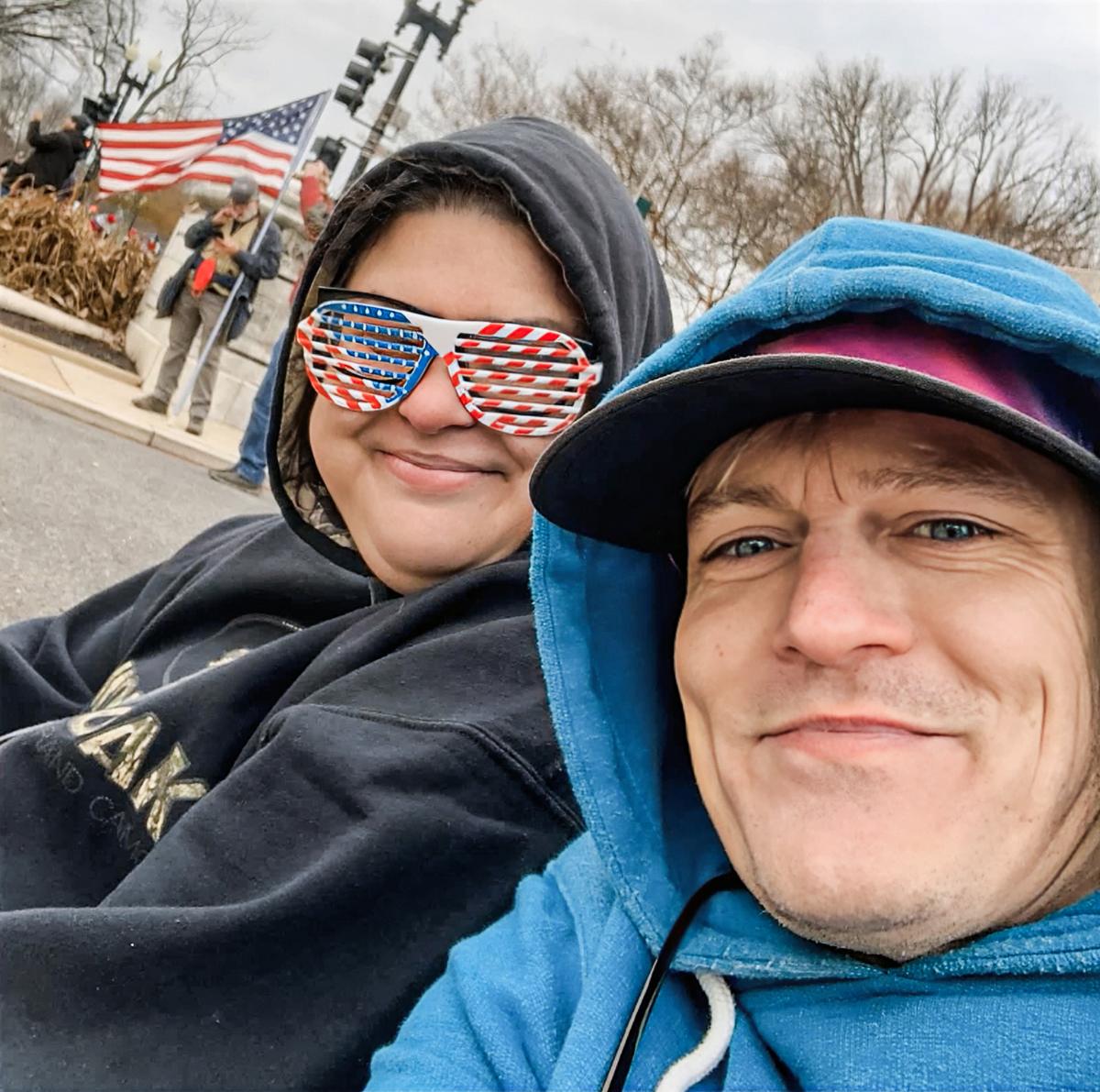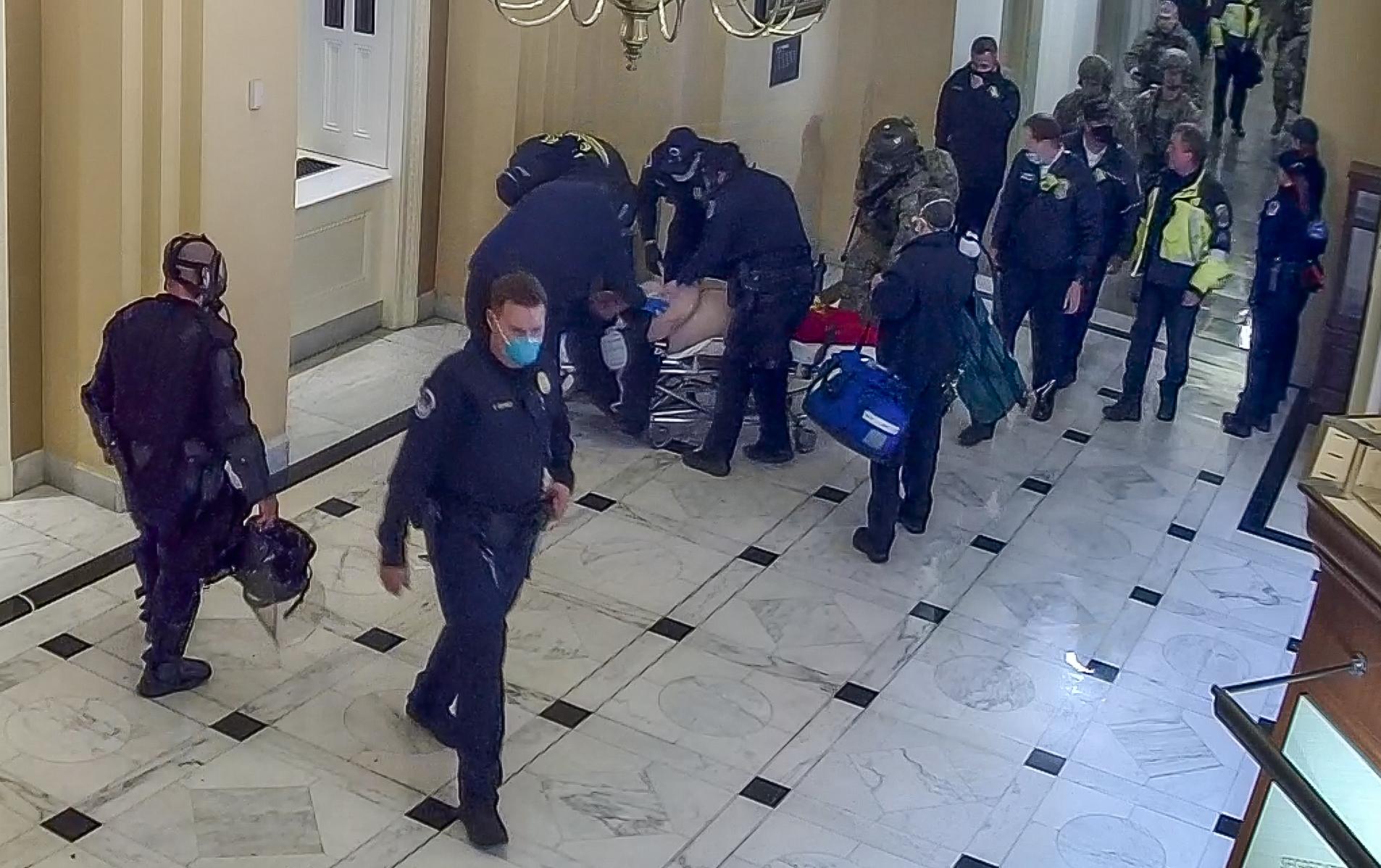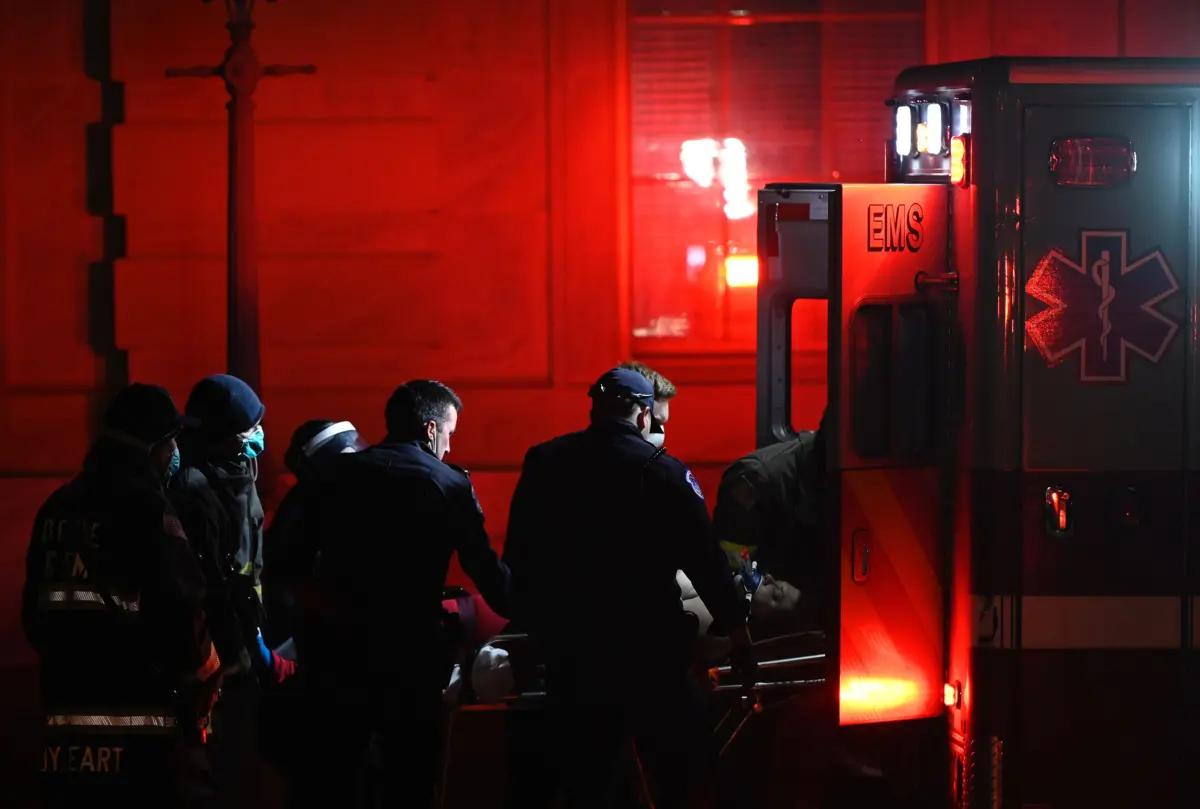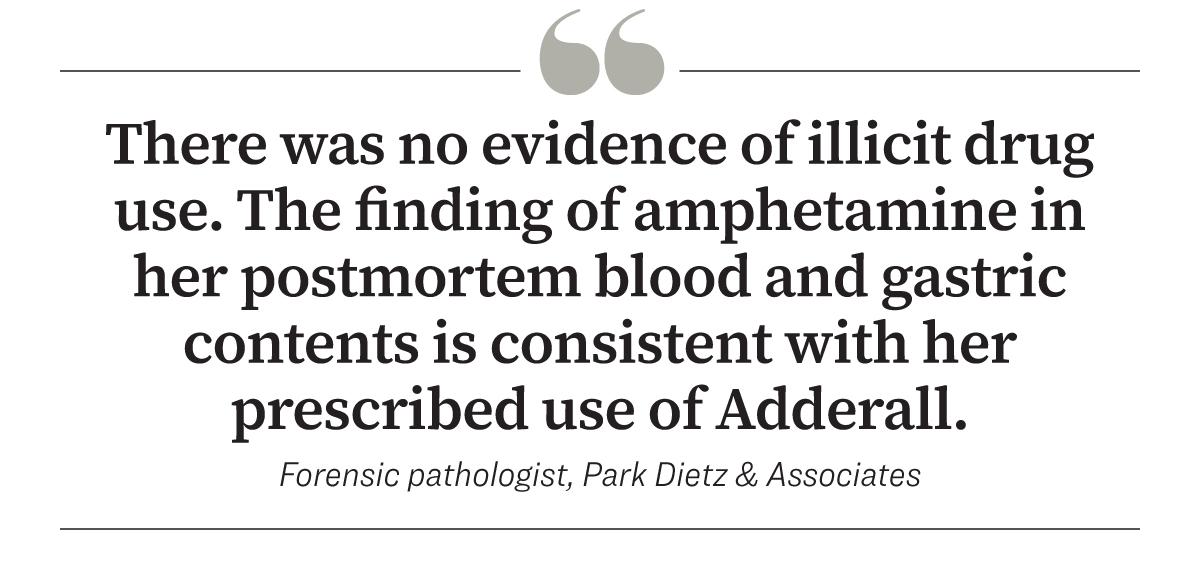A false media narrative that blames Rosanne Boyland for her own death is a slap in the face: "Rosanne deserves better," her mother says.
Thirty-three months after their daughter Rosanne Boyland’s tragic death at the U.S. Capitol on Jan. 6, 2021, Bret and Cheryl Boyland feel new pain every time a media outlet publishes the false claim that their daughter died of a drug overdose.
On Oct. 12, a prominent national newspaper wrote that Ms. Boyland “died of what was determined to be a methamphetamine overdose.”
Within a day, that claim spread all over the internet, even appearing as a snippet on the website of the Merriam-Webster dictionary under the word "die." A week later, the newspaper corrected the error, but the family said the damage was done—again.
The article brought to the surface new pain for the Boylands, whose daughter died in Washington at age 34 after collapsing in the Lower West Terrace tunnel.
News outlets have routinely claimed that Ms. Boyland died of a drug overdose.
Never-Ending Battle
Getting anyone to listen has been a never-ending battle.
“We knew from the early morning of January 7 that somehow the cause of death would be listed as drug-related,” Cheryl Boyland told The Epoch Times. “Both the medical examiner’s office and the detective said to expect a fentanyl overdose. We told them that was impossible, but they continued to insist on it.”
The fentanyl theory was due to the presence of fluid in Ms. Boyland’s lungs, according to a Jan. 7, 2021, Metropolitan Police Department report. The theory was wrong, as toxicology tests would prove a few months later.
Ms. Boyland didn't use fentanyl or street drugs. She had battled addiction earlier in her life but had been clean and sober for five years when the Jan. 6, 2021, overdose accusations began.
“For anyone like Rosanne or their family members who helped fight through addiction battles for years, to be falsely reported as dying of an overdose is about the worst slap in the face anyone could get,” Mr. Boyland told The Epoch Times. “To take it a step further and to see a lot of journalists say she died of a meth overdose is an even worse slap in the face.”
Adderall is used to treat attention deficit hyperactivity disorder; Ms. Boyland had taken the medication for 10 years without complications, her parents said. The stimulant is made up of four amphetamine salts.
Methamphetamine—a highly addictive and potent stimulant—isn't the same drug as Adderall.
Meth is one of the most widely abused controlled substances in the United States. Its illegal use has driven a steep increase in overdose deaths over the past decade. Much of the illegal supply of meth comes from criminal gangs in Mexico, according to the National Institute on Drug Abuse.
When the District of Columbia Office of the Chief Medical Examiner ruled that Ms. Boyland died of “acute amphetamine intoxication,” the Boylands challenged the conclusion, but their concerns were ignored by the medical examiner’s office, they said.
The Boylands said that Chief Medical Examiner Dr. Francisco Diaz told them that the “results of the autopsy were not clear-cut” and that the only thing that they could “all agree upon” as a cause of death was Ms. Boyland's prescription of Adderall.
“We asked him to include the term ‘prescription’ because others would believe she died from a meth overdose,” Mrs. Boyland said.
“He responded that everyone knows the difference between amphetamine and methamphetamine. Our family knew better.”
Victory Over Addiction
There was a time in Ms. Boyland’s life when she used heroin and crystal meth. Her parents said she worked very hard to get clean.“Rosanne spent a long time in treatment, trying to overcome her addictions,” Mrs. Boyland said. “She dedicated herself to helping others. Her friends have countless stories about her support during their trying times. Many of them relied on her to be strong.
“During her memorial service, we emphasized that she did not relapse, not only for Rosanne’s reputation, but so that her friends wouldn’t give up and relapse.”
The Boylands said their daughter would have taken her morning dose of Adderall at about 7 a.m. on Jan. 6, 2021.
There's no evidence that Ms. Boyland was ailing or impaired when she and her friend Justin Winchell attended President Donald Trump’s speech at the Ellipse or when they walked to the U.S. Capitol after 1 p.m. that day.
A video clip of Ms. Boyland ascending the stairs from the Capitol’s West Plaza to the Lower West Terrace that afternoon showed her smiling from behind her American flag sunglasses. She didn't appear ill.

“It’s impossible for her to have taken her medication about 7 a.m., walk around fine all day long, then overdose in the late afternoon without taking any more medication,” Mrs. Boyland said. “The medical examiner’s office refused to answer us about that. The blood sample used for toxicology tests was taken from an area [of the body] known to give inaccurate results—probably deliberately.”
The Office of the Chief Medical Examiner (OCME) declined to comment on the issues that were raised by the Boylands.
New Cause of Death
In April 2022, the Boylands hired forensics consultant group Park Dietz & Associates to do a comprehensive review of the autopsy and its conclusions. A new autopsy wasn't possible because Ms. Boyland’s body was cremated.A board-certified forensic pathologist from Park Dietz ruled out amphetamine intoxication as the proximate cause of death but said it might have been a secondary contributing factor.
“There was no evidence of illicit drug use,” the forensic pathologist wrote. “The finding of amphetamine in her postmortem blood and gastric contents is consistent with her prescribed use of Adderall, which is a combination drug containing four amphetamine salts.”
The concentration of amphetamine in Ms. Boyland’s blood was elevated, the doctor wrote, but other factors could explain this finding.
“Ms. Boyland's obesity may have potentiated the storage of the drug in her body tissues,” the pathologist wrote, "and blood from the inferior vena cava is not the optimal specimen for testing for amphetamines, which may be subject to postmortem redistribution.”
The pathologist said Ms. Boyland’s cause of death was compressional asphyxia, “a situation in which pressure exerted on the chest or back of an individual impedes normal breathing and often leaves no diagnostic physical findings.”
The pathologist said Ms. Boyland’s surroundings at the time of her collapse can’t be ignored.
Police had deployed an unknown gas into the tunnel at about 4:20 p.m., two minutes after Ms. Boyland walked into the structure, security footage shows. Witnesses described a sensation of the oxygen being sucked out of the atmosphere. The crowd panicked and ran to escape the tunnel.
At the same time, a police officer at the rear of the tunnel fired a pepper-ball rifle into the crowd, body camera footage shows. The Boylands said a witness told them that their daughter collapsed after being struck in the chest with a pepper ball.
Pepper balls contain PAVA—a powder-based irritant similar to capsicum that forms a small cloud upon impact. Fired by compressed air, the pepper projectiles travel up to 300 feet per second.
The pepper cloud can cause "skin irritation, serious eye irritation, and serious respiratory irritation," according to one manufacturer's product literature. "Exposure may result in copious tears, temporary blindness, burning sensation, and difficulty breathing," it states.
As police pushed the crowd out of the tunnel, protesters tripped and fell on top of Ms. Boyland and others who had fallen. Photographs and video footage show protesters spilling down the steps from the tunnel like a waterfall.

Police Beating
The Park Dietz pathologist’s report was issued before videos came to light showing Metropolitan Police Department (MPD) Officer Lila Morris beating Ms. Boyland with a wooden walking stick that she'd confiscated from a rioter.Ms. Boyland was struck in the head and ribs, according to MPD bodycam footage. Ms. Boyland’s companion that day, Mr. Winchell, said a strike near her nose caused blood to flow.
“She is laid out, maybe dead at this point, but they hit her at least two times in the body,” Mr. Winchell said in 2021. “And then they hit her once in the face, once right here in her nose, and some blood started coming out of her nose. Like, this is not a joke. Like, we were attacked.”
The autopsy found that Ms. Boyland suffered broken ribs on both sides of her body. The Park Dietz pathologist said broken ribs “are consistent with cardiopulmonary resuscitation efforts.” The autopsy contained the same conclusion.
Although the paramedics, emergency room staff, and medical examiner didn't note any signs of injury or trauma except a forearm abrasion, bodycam footage captured while medics attended to Ms. Boyland inside the Capitol shows an injury on the forehead above her right eye.


Family members noticed what appeared to be a large bruise on Ms. Boyland’s left shoulder in a news photograph published by The Epoch Times in July.
While the Boylands still have questions about their daughter’s death, they're confident that she didn't die from medication toxicity. And they wish that news media would get the facts straight and perhaps write about the conclusions of the Park Dietz & Associates forensic pathologist.
“It is bad enough that we have to deal with what the Office of the Chief Medical Examiner decided to rule the cause of death, but for people to say she died of meth overdose is just extremely hurtful,” Mr. Boyland said.
“I believe [it's] intended to just discredit Rosanne or anyone thinking she died from some other cause. It makes it look like it was all Rosanne's fault, and she did it herself.”
Mrs. Boyland said the ongoing lies about her daughter's death keep the family from getting any peace.
“It has been completely impossible for our family to heal,” Mrs. Boyland said. “There have been too many lies, too much manipulation, and too much obfuscation for us to feel whole.
“After having the strength to quit heroin and then meth, and all the good she did, Rosanne deserves better.”


